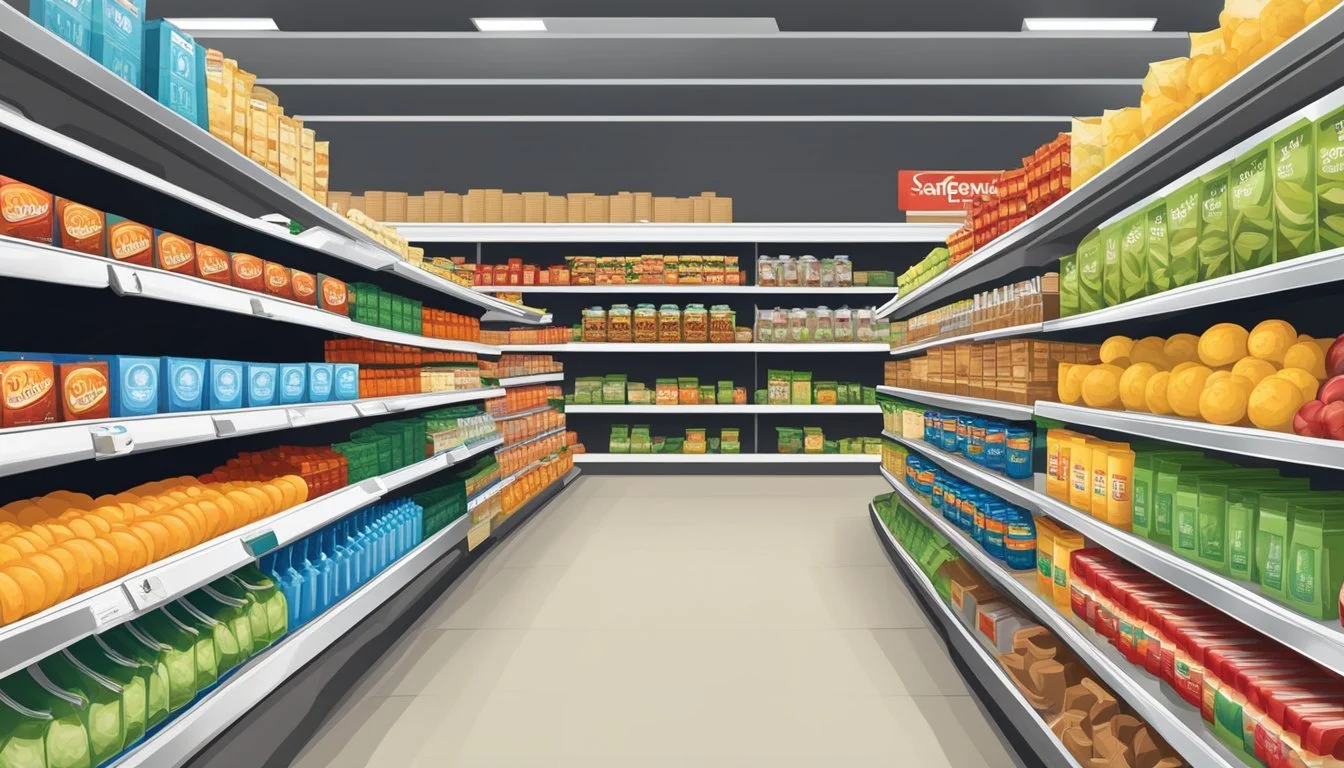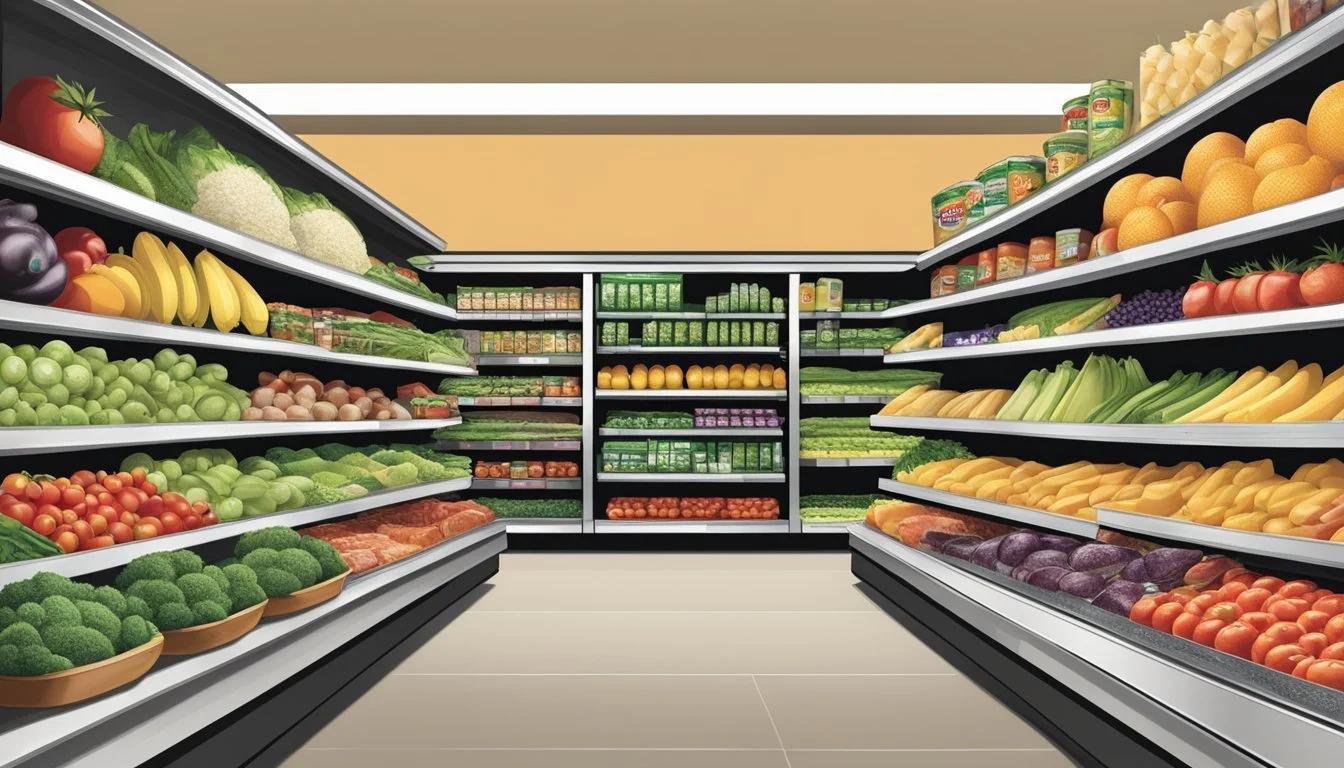Safeway vs Save Mart
Comparing Prices, Selection, and Customer Experience
Safeway and Save Mart are two prominent grocery store chains in the United States, each with its own unique offerings and customer base. Both stores strive to provide quality products and competitive prices to meet the diverse needs of shoppers.
Walmart typically offers lower prices than Safeway, with savings ranging from 16% to 59% across various shopping categories. This price difference can significantly impact a family's grocery budget over time. However, price is not the only factor to consider when choosing between grocery stores.
While Save Mart is not directly compared in the search results, it's important to evaluate factors such as product quality, store location, customer service, and available promotions when deciding between Safeway and Save Mart. Each store may excel in different areas, making the choice depend on individual priorities and preferences.
Grocery Store Overview
Safeway and Save Mart are prominent players in the American grocery landscape, each with its own unique history and market presence. These supermarket chains have evolved over the decades to meet changing consumer needs and preferences.
History of Safeway and Save Mart
Safeway's roots trace back to 1915 when M.B. Skaggs purchased a small grocery store in American Falls, Idaho. The company grew rapidly through acquisitions and expansions. In 1926, Safeway name was adopted, and by 1931, the chain had over 3,500 stores across the United States.
Save Mart Supermarkets began in 1952 when Nick Tocco and Mike Piccinini opened their first store in Modesto, California. The company focused on providing fresh produce and quality meats, expanding gradually throughout Central California.
Both chains have undergone significant changes over the years. Safeway merged with Albertsons in 2015, creating one of the largest food and drug retailers in the country. Save Mart has remained independently owned, growing through strategic acquisitions of other regional chains.
Market Presence
Safeway operates over 900 stores across the United States and Canada. Its strongest presence is in the Western and Mid-Atlantic regions. The chain is known for its wide selection of products, including organic and specialty items.
Save Mart has a more concentrated market presence, with approximately 200 stores primarily in California and Nevada. The company operates under several banners, including Save Mart, Lucky, and FoodMaxx.
Both chains face competition from larger national retailers like Walmart and Kroger, as well as regional players such as Winco and Sprouts Farmers Market. Safeway's broader geographical reach gives it an edge in terms of overall market share, but Save Mart maintains a strong regional presence in its core markets.
Price and Savings Analysis
Safeway and Save Mart both offer competitive pricing strategies to attract shoppers. Their approaches to everyday prices, discounts, and loyalty programs differ in several key ways that impact overall customer savings.
Everyday Prices
Safeway tends to have slightly higher regular prices compared to Save Mart. A typical grocery basket at Safeway may cost 5-10% more than at Save Mart for identical items. Save Mart focuses on keeping base prices low across most product categories.
Save Mart excels in produce pricing, often beating Safeway by 10-15% on fruits and vegetables. Safeway generally has better prices on national brand packaged goods. Store brand products are comparably priced at both chains.
Discounts and Sales
Safeway runs more frequent sales and deeper discounts than Save Mart. Weekly ads feature 30-50% off select items. Save Mart offers fewer but longer-lasting promotions.
Safeway's "Just for U" personalized deals provide extra savings on frequently purchased items. Save Mart lacks a similar targeted discount program.
Both stores double manufacturer coupons up to $1.00. Safeway allows stacking coupons with sales prices for maximum savings. Save Mart is less flexible with coupon policies.
Membership and Loyalty Programs
Safeway's Club Card is free and required for sale prices. It tracks purchases to generate personalized offers. Members earn points on purchases redeemable for gas discounts or grocery rewards.
Save Mart's Smart Rewards program is also free. It provides digital coupons and allows members to earn points for discounts on future purchases. The program is less robust than Safeway's but still offers meaningful savings.
Safeway's program delivers more personalized savings. Save Mart's rewards are simpler but less tailored to individual shopping habits.
Product Quality and Selection
Safeway and Save Mart offer distinct product ranges and quality levels across their grocery departments. Both stores aim to meet diverse customer needs, but differences emerge in their offerings and sourcing practices.
Fresh Produce
Safeway emphasizes quality in its produce section, featuring a wide selection of fresh fruits and vegetables. The store often stocks organic options alongside conventional produce. Safeway's produce typically appears well-maintained and rotated regularly.
Save Mart focuses on competitive pricing for its produce. While the selection may be slightly smaller than Safeway's, Save Mart still offers a solid range of fresh fruits and vegetables. The store frequently highlights locally sourced produce when available.
Both chains provide pre-cut fruit and vegetable options for customer convenience. Safeway tends to have a larger organic produce section compared to Save Mart.
Meat and Dairy
Safeway's meat department offers a diverse selection, including prime cuts and organic options. The store's butchers can provide custom cuts upon request. Safeway's dairy section features both national brands and the store's own Lucerne line.
Save Mart competes well in the meat category, often featuring competitive prices on popular cuts. The store's meat selection includes both pre-packaged and butcher-counter options. Save Mart's dairy section is comprehensive, with a mix of national and regional brands.
Both stores maintain clean and well-organized meat and dairy departments. Safeway may have a slight edge in variety, particularly for specialty or organic items.
Bakery and Dry Goods
Safeway's in-store bakery produces a wide range of fresh breads, pastries, and cakes. The store's dry goods aisles are extensive, offering everything from basic staples to gourmet ingredients. Safeway often stocks international food items and health-focused options.
Save Mart's bakery department, while smaller, still offers fresh-baked goods daily. The store's dry goods selection covers most essentials, with a focus on popular brands and value options. Save Mart may have fewer specialty items compared to Safeway.
Both stores provide a good selection of sandwich breads and baking supplies. Safeway typically offers more variety in specialty flours, grains, and baking mixes.
Store Brand Vs. National Brands
Safeway's store brands, including Signature Select and O Organics, cover a wide range of products. These private labels often compete directly with national brands in quality while offering lower prices. Safeway also stocks an extensive selection of national brand products across all departments.
Save Mart features its own store brands alongside national labels. While the range of store brand items may be smaller than Safeway's, Save Mart's private labels often provide good value. The store maintains a balance between national brands and its own labels across most categories.
Both chains use their store brands to offer competitive pricing on staple items. Safeway's private label range is typically more extensive and includes more premium and organic options.
Shopping Experience and Convenience
Safeway and Save Mart offer distinct shopping experiences tailored to different customer preferences. Each store has its own approach to layout, online services, and customer support.
Store Layout and Navigation
Safeway stores typically feature a spacious, well-organized layout. Wide aisles and clear signage make it easy for shoppers to find what they need. The stores often have dedicated sections for produce, bakery, deli, and meat departments.
Save Mart layouts vary by location but generally offer a more compact shopping experience. Their stores focus on efficiency, with strategically placed departments to encourage quick trips. Both chains organize products by category, but Save Mart may have a more varied arrangement depending on the specific store.
Online Shopping and Delivery Services
Safeway provides a robust online shopping platform. Customers can order groceries for delivery or pickup through their website or mobile app. The service integrates with their Just for U loyalty program, allowing shoppers to apply digital coupons and earn rewards.
Save Mart's online presence is growing but less extensive than Safeway's. They offer pickup services at select locations and have partnered with third-party delivery services in some areas. The online shopping experience may be less seamless compared to Safeway's integrated system.
Customer Service
Both chains prioritize customer service, but their approaches differ. Safeway often has dedicated customer service desks and trained staff to handle inquiries and returns. Their larger stores may offer additional services like floral arrangements or pharmacy consultations.
Save Mart emphasizes a more personal touch, with staff often familiar with regular customers. Their smaller store sizes can lead to quicker assistance. Both chains typically provide carry-out services and have cashiers trained to handle various payment methods and loyalty programs.
Sustainability and Community Impact
Safeway and Save Mart both implement sustainability initiatives and support local communities, but their approaches differ. Each retailer has unique programs focused on environmental stewardship and economic impact in the areas they serve.
Environmental Initiatives
Safeway has enrolled stores in sustainability certification programs. In 2017, 11 Safeway locations in California joined the Grocery Stewardship Certification program to reduce environmental impact and improve operational efficiency.
Save Mart emphasizes recycling and waste reduction. The company has implemented comprehensive recycling programs for cardboard, plastic, and other materials in its stores and distribution centers.
Both chains have introduced energy-efficient lighting and refrigeration systems to lower electricity usage. They've also made efforts to reduce single-use plastic bags.
Local Sourcing and Economic Impact
Safeway partners with regional farmers and producers through its "locally grown" programs. This supports area agriculture and provides fresher products to customers.
Save Mart highlights its roots as a Central Valley-based company. It sources produce and other goods from local suppliers when possible.
Both retailers create jobs in the communities they serve. They also contribute to local charities and food banks.
Save Mart operates a charitable foundation that provides grants to nonprofits in its operating areas. Safeway supports various causes through its Safeway Foundation.
Consumer Perception and Brand Reputation
Safeway and Save Mart have distinct reputations among consumers, shaped by their market positioning and customer experiences. Survey data and reviews provide insights into how shoppers perceive these grocery chains.
Customer Reviews and Survey Data
Safeway generally receives mixed reviews from customers. Many appreciate its loyalty program and weekly specials. Families often cite the store's cleanliness and wide product selection as positive attributes. However, some consumers report higher prices compared to competitors.
Save Mart garners positive feedback for its focus on fresh produce and local products. Customers frequently praise the friendly staff and community involvement. Survey data indicates that Save Mart scores well in customer satisfaction, particularly in smaller towns and suburban areas.
Both chains face criticism for occasional stock issues and long checkout lines during peak hours. Online reviews suggest that store experiences can vary significantly by location.
Market Positioning and Brand Identity
Safeway positions itself as a full-service supermarket with a broad appeal. Its brand identity emphasizes quality and convenience. The chain's private label products, such as Signature Select, are well-regarded by consumers seeking value without compromising on quality.
Save Mart cultivates a more regional, community-focused image. The company's branding highlights its California roots and commitment to supporting local farmers and producers. This approach resonates strongly with consumers who prioritize locally sourced goods.
Market research indicates that Safeway is often perceived as more upscale, while Save Mart is seen as more down-to-earth. Both chains have invested in modernizing their stores and expanding their online ordering options to meet evolving consumer expectations.






